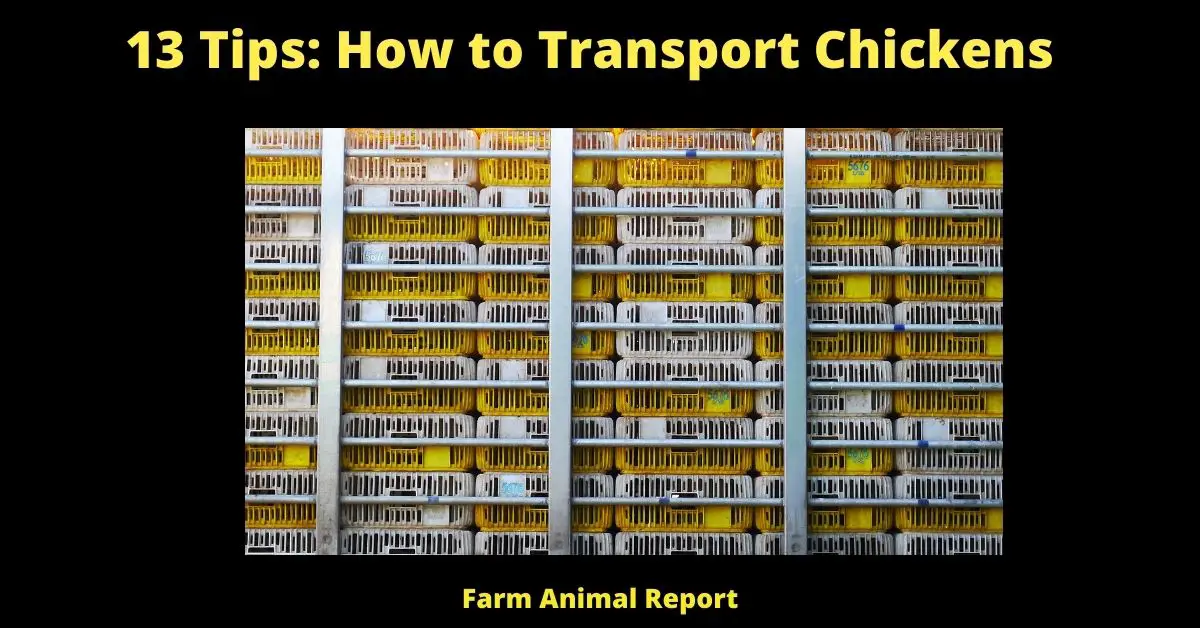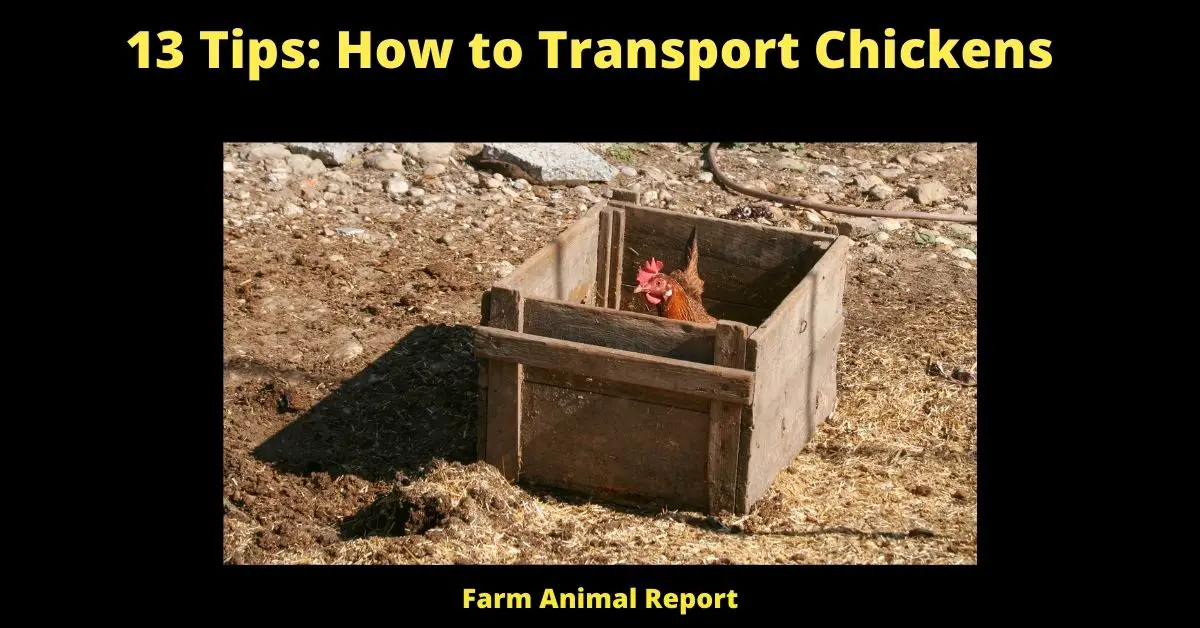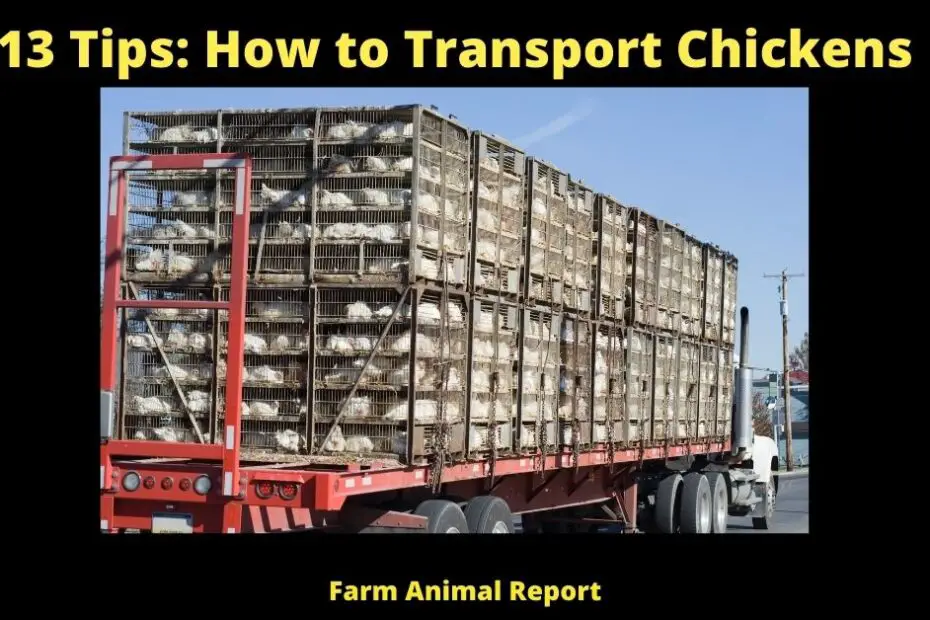If you’re like most people, you probably think transporting chickens is a pretty daunting task. How on earth can you get those poor little creatures from Point A to Point B without killing them? Well, fret not! The Ultimate Guide to Transporting Chickens has your back. In this post, we’ll discuss the best ways to move your chickens safely and efficiently. So read on, and learn how to transport chickens like a pro!
Transporting Chickens – How to Transport Chickens
Chickens are a common farm animal, and they can also make excellent pets. If you need to transport chickens, there are a few things you need to keep in mind. Transporting Chickens.
Check Out Amazon for Educational Resources for Breeding Chickens
First, chickens are easily stressed, so it’s important to create a calm environment during transport. Second, they need plenty of ventilation to avoid suffocation.

Third, they should be placed in a secure container so they don’t escape or hurt themselves.
Finally, it’s important to keep their food and water close at hand so they don’t become dehydrated or starve during transport. By following these simple guidelines, you can ensure that your chickens have a safe and comfortable journey.
There are many different ways to transport chickens, depending on the number of birds, the distance they need to travel, and the type of vehicle available. For small numbers of chickens, it is possible to transport them in a box or crate in the backseat or trunk of a car.
If more chickens need to be transported, or if the journey is a long one, a van or truck can be used. The chickens should be placed in wooden crates or chicken wire cages that are securely fastened so that they cannot escape.
It is important to provide plenty of ventilation for the chickens during transport, as well as food and water if the journey is going to take more than a few hours. With careful planning and attention to detail, it is possible to transport chickens safely and without any stressful incident
Transporting chickens can be a daunting task, but with these 13 tips you’ll be able to do it like a pro!
- Make sure your vehicle is clean and free of debris before loading the chickens
- Place a piece of plywood or an old sheet on the floor of your vehicle to prevent chicken poop from getting all over
- Put hay in the bottom of the transport carrier to keep the chickens warm and comfortable
- Secure the chickens in place with straps or bungee cords
- Drive slowly and carefully to avoid injuring or frightening the chickens
- Transport your chickens in a secure and comfortable container.
- Make sure the chickens have enough ventilation and that they can’t escape.
- Place the chickens in a shady spot to keep them cool during transport.
- Keep them calm by talking to them and petting them gently.
- Don’t let them get too close to the edge of the container or they may fall out.
- Drive slowly and avoid sudden movements that could scare the chickens.
- When you reach your destination, let the chickens out of the container slowly and carefully.
- Give them a chance to stretch their legs and get used to their new surroundings before letting them loose.
With these tips, transporting your chickens will be a breeze! Just remember to take it slow and be careful, and your feathered friends will arrive.
How to Transport Chickens in a Car?
When transporting chickens in a car, it’s important to take some simple precautions to ensure their safety and comfort. First, make sure the chickens have plenty of room to move around. It’s best to use a cage or pen that can be securely fastened in the back of the car.
If possible, place a sheet or tarp over the cage to protect the chickens from wind and weather. Second, provide the chickens with food and water for the journey. It’s also a good idea to pack some extra straw or bedding material in case they need it. Finally, avoid making sudden stops or turns, as this can disturb the chickens and cause them to injure themselves
How to Transport Chickens in a Truck?
Chickens are easily transportable in a truck provided that certain safety and comfort requirements are met. The truck should be clean and dry, with no sharp edges or protrusions that could injure the chickens. The floor of the truck should be lined with straw or another soft material to provide footing and cushioning.
The chickens should be placed in tiered wire cages that allow for ventilation while preventing the birds from escaping or attacking each other. The cages should be secured to the floor of the truck to prevent them from tipping over during transport.
Finally, care should be taken to avoid extreme temperatures during transport, as both heat and cold can be detrimental to chicken health. By following these simple guidelines, chickens can be safely transported in a truck with minimal stress and discomfort.
Best Way to transport Chickens in a Cardboard Box?
Chickens are easily Transporting Chickens in a Cardboard Box by following some simple guidelines. First, the box should be of a size that allows the chickens to stand comfortably without being overcrowded.
Second, the box should be lined with straw or newspaper to provide insulation and absorb any messes.
Third, it is important to secure the lid of the box so that the chickens cannot escape.
Finally, the box should be placed in a cool, dark place to minimize stress during transport. By following these simple tips, you can ensure that your chickens arrive at their destination safely and in good condition.
How to Transport Chickens to Butcher?
Chickens must be transported to the butcher in a way that reduces stress and maintains their quality. To do this, use a ventilated shipping container that allows for plenty of airflows. The chickens should be placed in the container with their heads facing toward the front of the vehicle to reduce the amount of movement during transport.
Make sure to pack straw or other bedding material in the bottom of the container to absorb any waste and provide insulation. During transport, check on the chickens regularly to ensure they have enough air and are not over-heating.
When you arrive at the butcher, unload the chickens quickly and efficiently to minimize their stress levels. With proper care, you can ensure that your chickens arrive at the butcher in good condition.

If You Have Already Killed your Chickens?
Chickens must be properly bled out within two minutes of their necks being cut in order to avoid tainted meat. Consequently, it is important to have a plan for transporting chickens to the butcher as soon as they are killed.
One option is to put the chickens in a cooler with ice packs. This will keep the meat fresh and prevent the growth of bacteria. Another option is to pluck the feathers and immediately put the chickens in a pot of boiling water.
This will kill any bacteria present on the skin and make it easier to remove the feathers. Whichever method you choose, it is important to transport the chickens to the butcher as quickly as possible.
Are their Chicken Transport Services?
According to the National Chicken Council, there are an estimated 9 billion chickens in the world. That’s a lot of chickens! And it’s no surprise that these birds are raised in all sorts of different environments, from small backyard flocks to large commercial operations.
So how do all these chickens get from one place to another? The answer is chicken transport services. These companies specialize in moving live chickens safely and efficiently, whether they’re being shipped across the country or around the world.
They use a variety of transportation methods, from trucks and trains to planes and ships, to make sure that their feathered customers arrive at their destination on time and in good condition. So next time you see a chicken nugget on your plate, remember that it may have taken a long and complicated journey to get there!
Final Thoughts – How to Transport Chickens
Chickens are delicate creatures, and there are many things that can kill them while transporting them. One of the most common causes of death is stress. Chickens are very sensitive to changes in their environment, and the stress of being transported can quickly lead to death. respiratory problems are another common cause of death in chickens during transport.
Chickens have a very high respiration rate, and they need a constant supply of fresh air to breathe. If the air quality is poor or the temperature is too high, chickens can quickly suffocate. Finally, dehydration is also a common cause of death in chickens during transport.
Chickens need a constant supply of water to stay hydrated, and if they do not have access to water, they will quickly die. By knowing the risks, you can help to ensure that your chickens arrive safe and sound.
Some of the Most Important considerations are:
- Safety
- Security
- Temperature
- Water
- Enough Room
God Bless Greg





